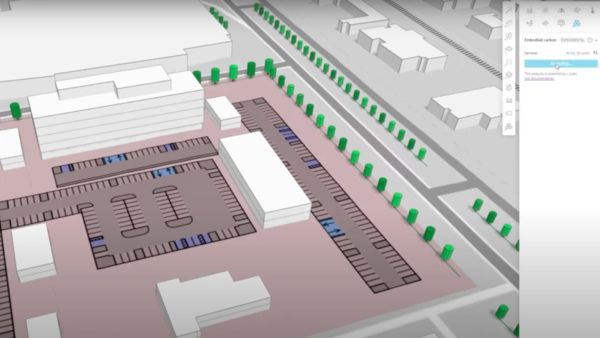Toby Sortain, senior BIM manager at ISG, explains how a simple idea is helping unleash the potential of BIM post-occupancy.
It’s strange how simple ideas so often prove the best and most powerful solutions to our problems, yet many of us seem almost hardwired into the world of complexity. If it’s complicated, then it must somehow be better.
Within the world of BIM – for many it is the very complexity of the subject matter that prevents them from seeing the real opportunities that this game-changing approach can deliver for the built environment.
Ever since the government put its weight behind the wider adoption of BIM within our industry, things have been moving in the right direction, but it’s never fast enough for passionate believers in the power of this technology-based methodology.
A key frustration for many in our business is the sense that presently BIM is a missed opportunity for our customers. They understand how instrumental it can prove during the pre-construction and delivery phases of a project, but on completion, this amazing digital resource is often consigned to a dusty laptop and left to wither and die.
There are two key issues here: education and relevance. Let’s tackle education first. If customers are educated to the vast potential that an accurate asset data, compiled throughout a project, gives them in the operation and management of a building, then perhaps we can start to shift perceptions.
At the point of completion, a contractor will hand over a rich database of relevant asset information on components that comprise the fit-out, refurbishment or new build scheme.
On a very basic level – are we as an industry doing enough to provide building owners or tenants with this very simple fact? At this singular point in time, they have a one hundred percent accurate record of everything in that building. If this data is simply handed to the building’s outsourced FM team, then we have neglected our duty to explain how powerful this dataset is, and how valuable it can be in the future maintenance and upgrade of the property asset.
Here’s where the relevance part kicks in. The problem is that the data is only accurate at the moment of handover. However, as and when components fail and need to be replaced, or as the building is reconfigured due to changing requirements, if those changes aren’t tracked and recorded accurately, our reliable data starts to become less and less relevant.
This key issue is one of the fundamental reasons why we believe BIM is being held back as an operational tool for our customers.
So what did we do at ISG to solve this problem? Our BIM teams sat in a room and discussed how we could empower our customers to keep pace with the changes made to their physical assets over time, to provide rigour to the digital asset.
After a great deal of discussion, a simple idea was suggested. Create dynamic asset forms with a permanent link to the BIM dataset. Then train the building’s FM team to update these dynamic forms when change occurs in the building, such as when a unit fails or is replaced.
We believe that the simple idea of “smart forms” is transformational for how BIM is used post-completion. Our customers are already seeing the benefit and our post-occupancy surveys suggest that BIM datasets are still being used and updated in stark contrast to the old deliver and dump days.
A further evolution of this idea is that we’ve gone beyond the boundaries of BIM itself. If a customer doesn’t utilise BIM for their base-build or refurbishment, we can still use our smart forms as a dynamic asset register. Sure, they don’t benefit from all the modelling and spatial data, but they do have an accurate and infinitely updatable asset database.
This simple idea has rippled down through our supply chain partners. With data collection being imperceptible to the user, we have removed the need for elaborate explanations and training around BIM data requirements.
Instead, asset data delivery is incorporated smoothly as part of our existing O&M manuals. Multiple data entry points are reduced, limiting opportunities for errors. Data is simply entered once, at the relevant stage in the project delivery timeline, and the model and database automatically populated.
This represents huge administrative savings and massively improves data quality and validation. Perhaps most important, our supply chain loves the concept and this helps us to further strengthen our relationships with key delivery partners.
A final thought that strikes me is how we’ve turned what for many was a redundant data set into a dynamic and accurate asset register that evolves with the building. That surely must prove an attractive proposition for potential buyers?
Could our “smart form” actually add real commercial value to our customer’s property assets? Now that’s a prospect we look forward to testing in due course.
Comments
Comments are closed.
















Definitely agree the amount of data that is collated then shelved after completion. One other thing that should be done with it is handed to the local fire department who can then put it on there ORD system which will provide any Emergency service respondents with data such as building height, floor plans, service routes, location of risers etc after watching Grenfell inquiry over last week its clear the fire service have the databases for this info but just don’t actually have the info needed to fill out there database, as we know the FB no longer carry out fire safety inspections so don’t have the opportunity to gather such info. Perhaps even if there was a standard information form that has to be completed and given to the FB after refurb or construction rather than them having to gather this info independently.